
This fava bean and toasted rice shoyu is perfect for those who are allergic to soy, or avoiding soy beans for sustainability reasons. It is also gluten-free.
I’ve developed this recipe to use koji, so there is no need to crack wheat or grow spores in an incubator – that tricky part is avoided/done for you. The hardest thing about this recipe is waiting four months for it to be ready. I failed on that part – removing spoons from the top of the mixture a few weeks before it was officially ready! But as someone who’s allergic to soy and so had to endure years without a delicious, umami filled Japanese sauce I think I can be forgiven.
Fava Bean and Toasted Rice Shoyu - A Soya Free Soy Sauce
Equipment
- 3 litre jar
- Sauce pan
- Muslin
- Bowl
Ingredients
- 300 g fava beans dried
- 1 packet Umami Chef Koji
- 200 g rice
- 180 g salt
Instructions
- Rinse the fava beans, removing any bad ones

- Soak them in one litre of cold water for at least 8 hours

- Replace the water, pour into a pan, and simmer gently until the beans are cooked (approximately 45 minutes)
- Whilst the fava beans are cooking, spread the rice on a baking tray. I used a white sushi rice, but any type of rice will do.
- Bake the rice at 180'C until it is golden brown. This will take about 20 minutes. Ensure you shake the rice regularly for an even colour.,

- When the fava beans have cooked, drain them.

- Add one litre of water, which has been boiled and then allowed to cool slightly, to the 3 litre jar. Note: The water is boiled to ensure all bacteria is killed, but ensure it has cooled, as if the water is too hot the jar might crack.
- Add the salt to the water and stir until dissolved.
- Transfer the cooked beans and toasted rice to a 3 litre jar. Mix well.
- Once the mixture has cooled to below 40'C, add the koji.Note: If you don't have a thermometer, just wait until the jar no longer feels warm.
- Stir well and then cover with a cloth - I used a muslin, which I attached with an elastic band, but you could use a T-Towel and string.

- Leave the jar at room temperature for about 4 months; stirring every other day for the first week and then weekly after that.

- After 4 months the colour will have darkened and the liquid will taste delicious! To remove the liquid from the solids, strain through a muslin. Squeezing to remove as much liquid as possible.

- Pour into a sterilised bottle and then store in the fridge. Use as you would soy sauce.



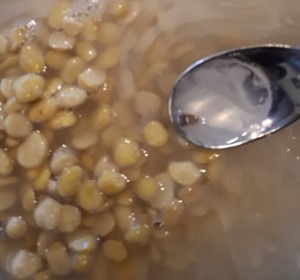
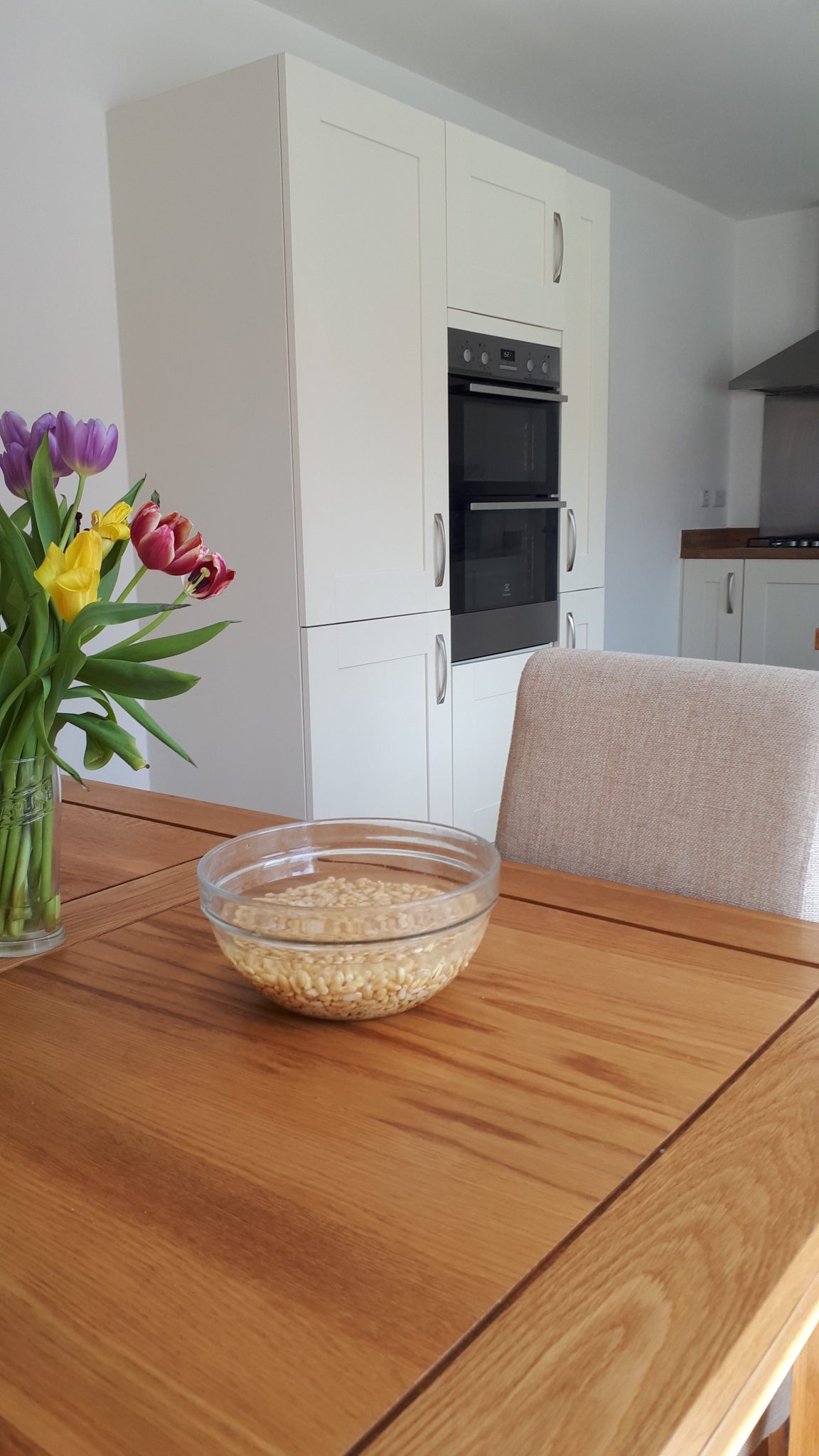
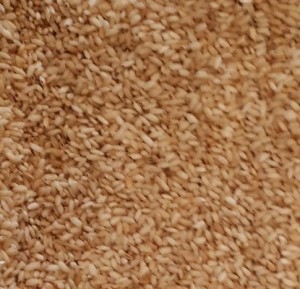
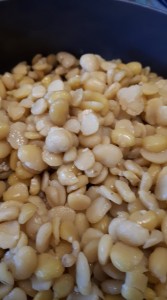
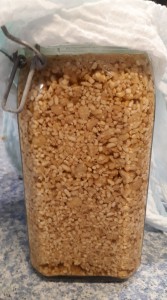

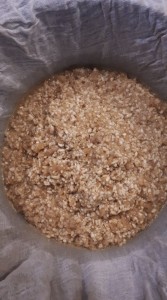







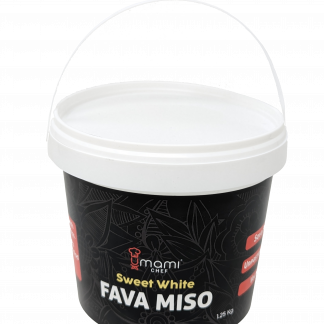

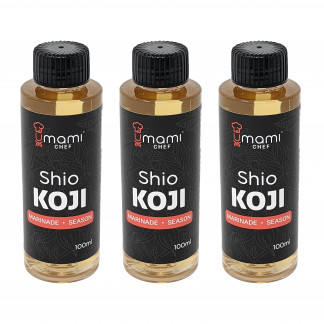
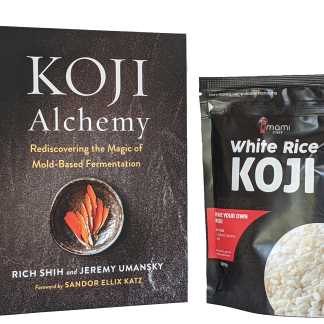
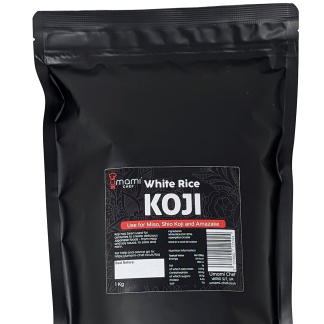


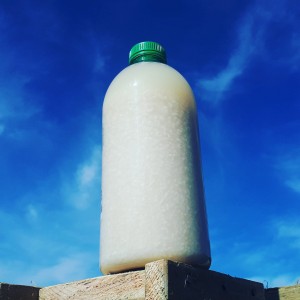

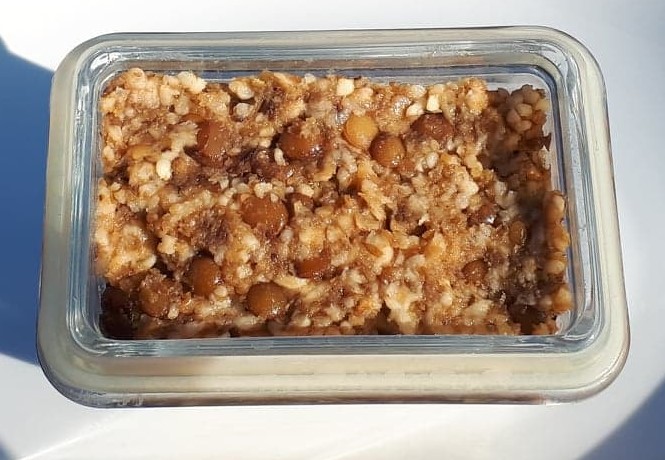
excellent info wish you all the best from germany keep it going
Thank you!
Can you compare the flavor profile to soy sauce?
It’s very similar in taste. Slightly lighter and a bit more floral.
Thanks for this recipe! Is it important to use fava beans, or can this type of shoyu be made with other types of beans? Also, why doesn’t it become as dark as typical shoyu, is that due to using fava beans instead of soybeans, or because of the toasted rice?
You could use any bean for this – or even pulses such as lentils. It doesn’t become as dark as other shoyus because of the toasted rice. The recipe has been designed to be allergen free, whilst also eliminating the need to grow koji on beans – which is harder to do. If you grew the koji on fava beans directly and used toasted wheat, it would create a darker sauce.
hi
is the rice toasted after cooking it or no need to cook the rice ?
The rice is cooked as you dry roast it – no need to add any water to it.